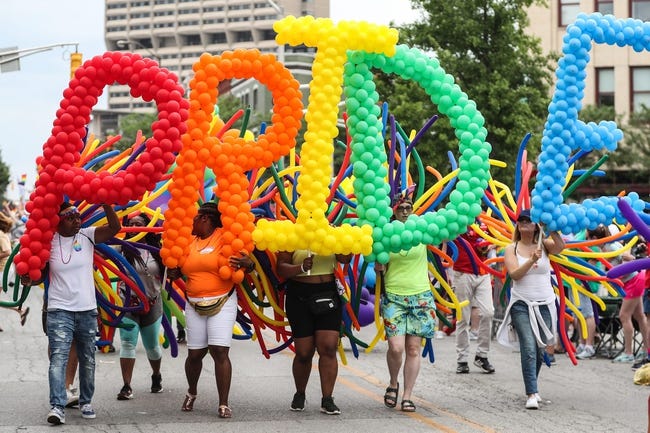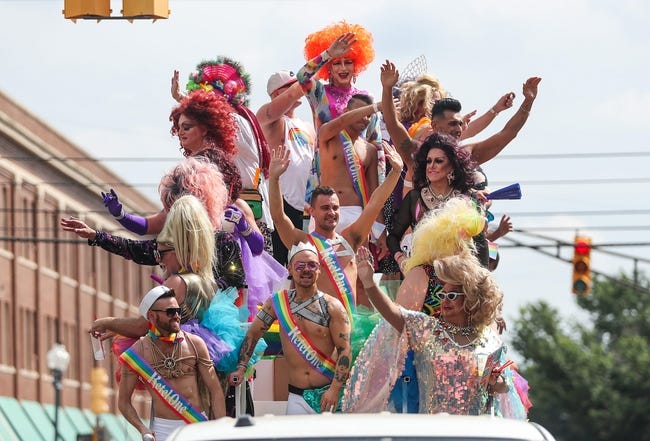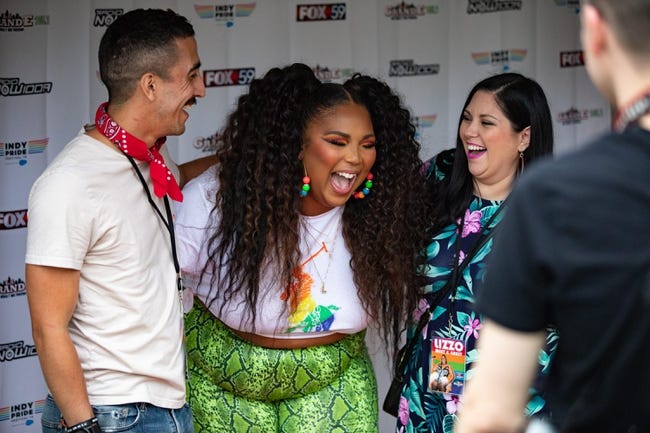Beginning in the early 1980s, years before the creation of the actual organization, Indiana gay and lesbian organizations like Justice, Inc. and the Greater Indianapolis Gay Business Association (GIGBA) laid the seeds for Indy Pride. These two organizations eased public acceptance of the LGBTQ community by hosting annual public events during the summer—Pride meals in 1981 and a Labor Day picnic in 1982.

In June 1988, Justice Inc. hosted a Pride event at the Indianapolis Tennis Center, which was located on the campus. It included a yard sale, church services, and a roller-skating party and attracted 175 people. It was one of the first LGBTQ events that took place in a public space rather than in a restaurant or bar. The following year, the organization held a Pride Festival at Westlake Park, on the Indianapolis westside and over 1,000 individuals participated. With the attendance of over 3,000 people, the 1990 Celebration on the Circle at the was the largest LGBTQ event held in Indianapolis up to this time.
A major development for Indy Pride festivities came in 1995 with the official formation of Indy Pride, Inc. The organization made changes to maintain a fresh vision for future Indy Pride Festivals. It moved the annual event to the and began charging admission for some events, but the changes led to a debt of $10,000.

However, Justice, Inc. and another LGBTQ organization, The Word, continued what would become the traditional Pride annual event at University Park and . Under the leadership of Linda Batchelor-Bellew, Indy Pride emerged from debt and reorganized as a tax-exempt entity in 1997. It continued to collaborate with other community organizations like Justice, Inc. on Pride events. Their annual Indy Pride June summer event continued at multiple locations, including , , and .
Considerable growth and change came for Indy Pride when Gary Brackett assumed leadership. The group merged with Justice, Inc. in the mid-2000s, which led to a consolidation of Pride events. During this time, the Pride Parade, a core pillar of Indianapolis’ Pride celebration, first took shape. These changes exponentially increased attendance at Indy Pride events. In 2002, the city’s festivities drew just under 10,000 people. By 2012, that number swelled to approximately 80,000 attendees.

By the 2010s, Indy Pride’s annual June festivities had become a staple of the Indianapolis cultural calendar. The event’s sustained success allowed the event to move to , rebranded as the Circle City IN Pride Festival. For a period, to honor Brackett’s work, the parade bore the Cadillac Barbie Pride Parade moniker, referring to Brackett’s drag persona as a member of the .
By 2020, the parade had grown into a two-hour celebration redubbed the Indy Pride Parade and recentered along Massachusetts Avenue. Over the years, the event has attracted a wealth of vendors and numerous celebrities such as RuPaul, Blair St. Claire, and Lizzo.

Help improve this entry
Contribute information, offer corrections, suggest images.
You can also recommend new entries related to this topic.

